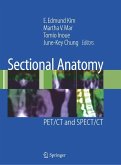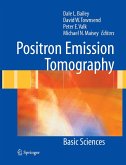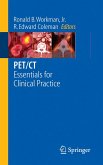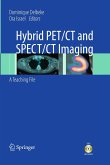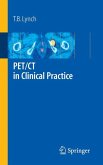Combined positron emission tomography (PET) or single photon emission computed tomography (SPECT) with computed tomography (CT) has developed into the faste- growing imaging modality largely because combined PET or SPECT with CT data acquisition is highly synergistic in diagnosis and therapeutic evaluation. All currently available data indicate that integrated PET or SPECT/CT is more sensitive and s- ci?c than either of its constituent imaging methods alone and probably more so than images obtained from separate systems viewed side by side. The PET or SPECT/CT provides precise localization of the lesions, thereby increasing diagnostic speci?city particularly by reducing false-positive ?ndings. The other advantage of adding CT is that the transmission data obtained with the CT component is useful for attenuation correction of the emission data. This makes PET/CT 25%-30% faster than PET alone with standard attenuation-correction method, leading to higher patient throughput and a more comfortable examination, which typically lasts 30 minutes or less. With hybrid imaging, unique physiologic information bene?ts from a precise to- graphic localization. Simultaneous evaluation of metabolic and anatomic information about normal and disease processes is needed to answer complex clinical questions and also raise the level of con?dence of scan interpretation. It is always dif?cult to consider three dimensions in the mind's eye and view the relationship of the viscera and fascial planes in transverse and vertical sections of the body's structure. The introduction of modern imaging techniques has enormously expanded the already considerable importance of sectional anatomy.
From the reviews:
"This book is an image-based guide to the sectional anatomy of fusion images obtained with PET/CT and SPECT/CT scanners. ... The book is aimed primarily at clinicians who routinely interpret images and is a useful reference for most molecular imaging probes currently used with PET/CT and SPECT/CT. ... this book would be a valuable resource for anyone reading PET/CT and SPECT/CT images, providing nuclear medicine and radiology physicians, especially with a practical reference for image interpretation." (Martin Allen-Auerbach, The Journal of Nuclear Medicine, Vol. 49, 2008)
"This book is an image-based guide to the sectional anatomy of fusion images obtained with PET/CT and SPECT/CT scanners. ... The book is aimed primarily at clinicians who routinely interpret images and is a useful reference for most molecular imaging probes currently used with PET/CT and SPECT/CT. ... this book would be a valuable resource for anyone reading PET/CT and SPECT/CT images, providing nuclear medicine and radiology physicians, especially with a practical reference for image interpretation." (Martin Allen-Auerbach, The Journal of Nuclear Medicine, Vol. 49, 2008)


